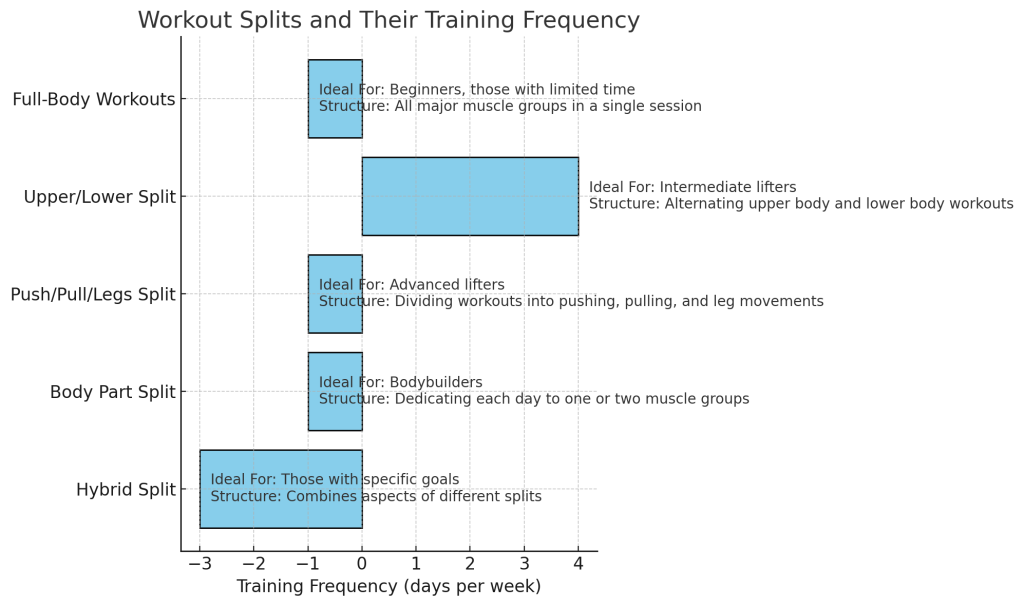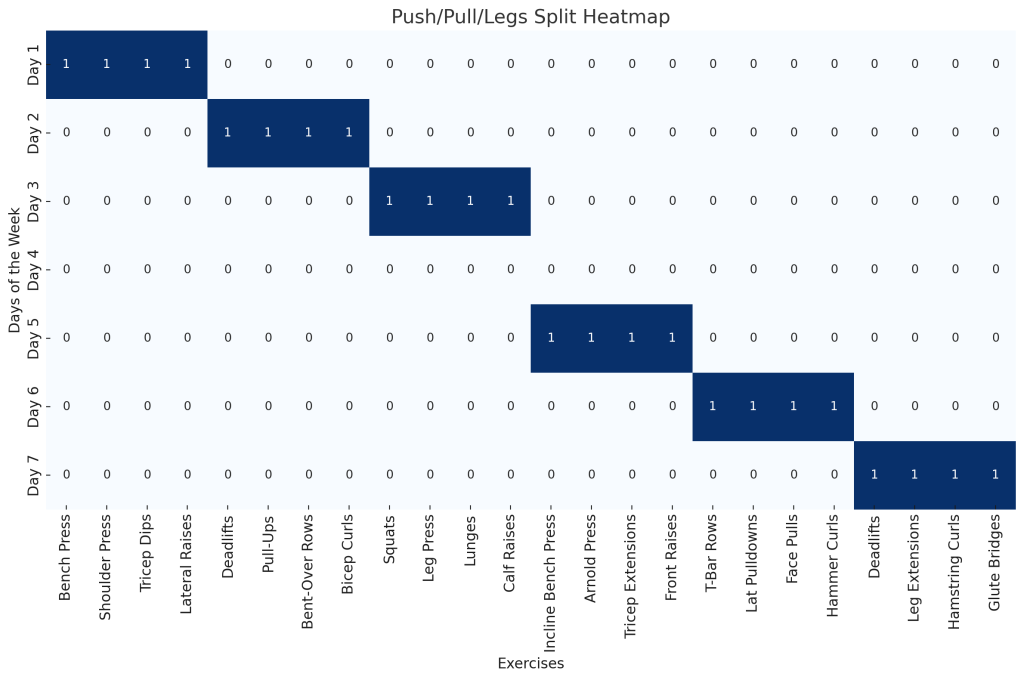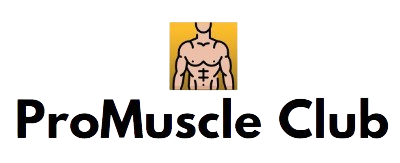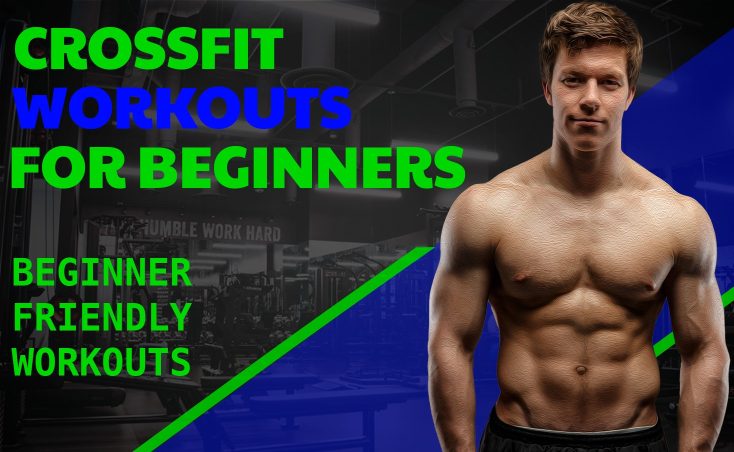Creating a personalized muscle-building workout plan is crucial for achieving your fitness goals efficiently and sustainably. A tailored plan takes into account your unique body type, fitness level, and objectives. Here’s a step-by-step guide to help you design a workout plan that suits your needs.
1. Assess Your Current Fitness Level
| Assessment Area | Test/Method | Description | Purpose |
| Strength | Push-Up Test | Perform as many push-ups as possible in one minute. | Measures upper body strength and endurance. |
| Strength | Pull-Up Test | Record the maximum number of pull-ups you can do without assistance. | Measures upper body and back strength. |
| Strength | Squat Test | Perform as many bodyweight squats as possible in one minute. | Evaluates lower body strength and endurance. |
| Strength | Maximal Strength Tests | Determine one-rep max (1RM) for bench press, deadlift, and squat. | Measures maximal strength for major lifts. |
| Body Composition | Body Fat Percentage | Use calipers, body fat scale, or professional methods like DEXA scans. | Measures body fat percentage to assess leanness. |
| Body Composition | Lean Body Mass | Calculate total body weight minus body fat weight. | Understands how much weight is muscle, bone, and other tissues. |
| Endurance | Running Test | Measure how far you can run in 12 minutes (Cooper Test) or time to run a mile. | Assesses cardiovascular endurance. |
| Endurance | Rowing Test | Time how long it takes to row 2000 meters on a rowing machine. | Evaluates cardiovascular and muscular endurance. |
| Endurance | Plank Test | Hold a plank position for as long as possible. | Assesses core endurance and stability. |
| Flexibility & Mobility | Sit and Reach Test | Sit on the floor with legs straight and reach forward as far as possible. | Measures lower back and hamstring flexibility. |
| Flexibility & Mobility | Shoulder Flexibility Test | Reach one arm over the shoulder and the other behind the back to see if hands can touch. | Evaluates shoulder flexibility. |
| Flexibility & Mobility | Squat Mobility Test | Perform a deep bodyweight squat, checking for discomfort or limitations in ankle, knee, and hip mobility. | Assesses lower body mobility. |
| Limitations & Injuries | Medical History | Review past injuries, surgeries, or chronic conditions. | Identifies any health issues that might affect training. |
| Limitations & Injuries | Physical Limitations | Note any pain or discomfort during specific movements or exercises. | Understands physical limitations to tailor the workout. |
| Baseline Measurements | Weight | Record body weight regularly. | Tracks changes in overall weight. |
| Baseline Measurements | Circumference Measurements | Measure chest, waist, hips, thighs, arms, and other key areas. | Tracks changes in muscle size and fat loss. |
Before starting any workout plan, it’s essential to evaluate your current fitness level. This includes understanding your strength, endurance, flexibility, and any limitations you may have. You can do this by:
- 1. Evaluate Your Strength
- Strength evaluation gives you a baseline of your muscular strength and endurance. Here’s how to do it:
- Push-Up Test: Count how many push-ups you can do in one minute. This tests your upper body strength, particularly your chest, shoulders, and triceps.
- Pull-Up Test: Record the maximum number of pull-ups you can perform without assistance. This exercise measures your upper body and back strength.
- Squat Test: Perform as many bodyweight squats as possible in one minute. This evaluates your lower body strength and endurance.
- Maximal Strength Tests: Determine your one-rep max (1RM) for major lifts such as the bench press, deadlift, and squat. Ensure you have proper form and a spotter for safety.
- 2. Measure Your Body Composition
- Understanding your body composition helps you track muscle gain and fat loss more accurately than weight alone. Here’s how to measure it:
- Body Fat Percentage: Use calipers, a body fat scale, or professional methods like DEXA scans to measure your body fat percentage. Lower body fat percentages typically indicate a leaner physique.
- Lean Body Mass: Calculate your lean body mass (total body weight minus body fat weight) to understand how much of your weight is muscle, bone, and other non-fat tissues.
- 3. Assess Your Endurance
- Endurance tests gauge your cardiovascular fitness and muscular endurance. These tests can include:
- Running Test: Measure how far you can run in 12 minutes (Cooper Test) or how long it takes you to run a mile. This assesses your cardiovascular endurance.
- Rowing Test: Use a rowing machine to see how long it takes to row 2000 meters. This test evaluates both cardiovascular and muscular endurance.
- Plank Test: Hold a plank position for as long as possible to assess your core endurance and stability.
- 4. Check Your Flexibility and Mobility
- Flexibility and mobility are essential for preventing injuries and improving performance. Here’s how to assess these areas:
- Sit and Reach Test: Sit on the floor with your legs straight and reach forward as far as possible. This test measures the flexibility of your lower back and hamstrings.
- Shoulder Flexibility Test: Reach one arm over your shoulder and the other behind your back to see if your hands can touch. This evaluates shoulder flexibility.
- Squat Mobility Test: Perform a deep bodyweight squat and check for any discomfort or limitations in your ankle, knee, and hip mobility.
- 5. Identify Any Limitations or Injuries
- Understanding any physical limitations or past injuries is crucial for tailoring your workout plan. Consider the following:
- Medical History: Review any past injuries, surgeries, or chronic conditions that might affect your exercise routine.
- Physical Limitations: Note any pain or discomfort during specific movements or exercises. Consulting with a healthcare professional or physical therapist can provide more detailed insights.
- 6. Record Baseline Measurements
- Documenting your baseline measurements allows you to track progress and make adjustments to your plan. Key measurements include:
- Weight: Record your body weight regularly, but don’t rely solely on it as an indicator of progress.
- Circumference Measurements: Measure your chest, waist, hips, thighs, arms, and other key areas to track changes in muscle size and fat loss.
2. Set Clear and Realistic Goals
Define what you want to achieve with your muscle-building workout plan. Goals should be specific, measurable, attainable, relevant, and time-bound (SMART). Examples include:
- Gaining 5 pounds of muscle in three months.
- Increasing your bench press by 20 pounds in two months.
- Reducing body fat percentage by 3% while maintaining muscle mass.
3. Choose the Right Exercises
Select exercises that target all major muscle groups. A well-rounded workout plan includes:
- Compound Exercises: These exercises work multiple muscle groups simultaneously, such as squats, deadlifts, bench presses, and pull-ups. They are crucial for building overall muscle mass.
- Isolation Exercises: These exercises target specific muscles, such as bicep curls, tricep extensions, and leg curls. They help in sculpting and defining muscles.
4. Determine Your Workout Split
Decide how to divide your workouts throughout the week. Common splits include:
- Full-Body Workouts: Ideal for beginners, training all major muscle groups in one session, 2-3 times a week.
- Upper/Lower Split: Training upper body muscles one day and lower body muscles the next, typically 4 times a week.
- Push/Pull/Legs Split: A more advanced split that involves push exercises (chest, shoulders, triceps), pull exercises (back, biceps), and legs, usually spread over 5-6 days a week.

Here’s a plot illustrating the different workout splits and their training frequency, along with information on who they are ideal for and their structure.
- Full-Body Workouts: 2-3 days per week. Ideal for beginners and those with limited time. Structure involves all major muscle groups in a single session.
- Upper/Lower Split: 4 days per week. Ideal for intermediate lifters. Structure involves alternating upper body and lower body workouts.
- Push/Pull/Legs Split: 5-6 days per week. Ideal for advanced lifters. Structure involves dividing workouts into pushing, pulling, and leg movements.
- Body Part Split: 5-6 days per week. Ideal for bodybuilders. Structure involves dedicating each day to one or two muscle groups.
- Hybrid Split: 3-6 days per week. Ideal for those with specific goals. Structure combines aspects of different splits.
This visual representation helps in understanding the frequency and suitability of each workout split.
5. Set Reps and Sets
The number of repetitions (reps) and sets you perform affects muscle growth:
- For muscle hypertrophy (growth), aim for 8-12 reps per set.
- Perform 3-5 sets per exercise.
- Ensure to progressively overload your muscles by gradually increasing the weight or reps over time.
6. Incorporate Rest and Recovery
Muscle growth occurs during rest, not just during workouts. Ensure your plan includes:
- Rest days: At least one or two rest days per week.
- Sleep: Aim for 7-9 hours of quality sleep per night.
- Nutrition: Consume adequate protein (1.6 to 2.2 grams per kilogram of body weight), healthy fats, and carbohydrates to fuel and repair muscles.
7. Track Your Progress
Keep a workout journal to log your exercises, weights, reps, and sets. Tracking your progress helps you stay motivated and make necessary adjustments to your plan. Additionally, take progress photos and measurements every few weeks.
8. Adjust as Needed
Your body will adapt to your workout routine over time, so it’s crucial to periodically review and adjust your plan. Change up exercises, reps, sets, or workout splits every 4-6 weeks to continue challenging your muscles and promoting growth.
9. Stay Consistent and Patient
Building muscle is a gradual process that requires consistency and patience. Stick to your plan, stay disciplined, and celebrate small victories along the way.
Determine Your Workout Split
Choosing the right workout split is crucial for effectively organizing your training sessions and ensuring you target all major muscle groups without overtraining. A workout split divides your training into different muscle groups or movement patterns on different days, optimizing recovery and maximizing muscle growth. Here’s an in-depth look at various workout splits to help you determine the best one for your personalized muscle-building plan.
1. Full-Body Workouts

Ideal For: Beginners, those with limited time, or anyone looking to maintain overall fitness.
Structure: Full-body workouts involve training all major muscle groups in a single session. Typically performed 2-3 times per week, with at least one rest day in between sessions.
Example:
- Day 1: Squats, Bench Press, Bent-Over Rows, Overhead Press, Deadlifts, Planks.
- Day 2: Rest or Active Recovery.
- Day 3: Lunges, Pull-Ups, Dumbbell Flyes, Shoulder Press, Leg Press, Russian Twists.
- Day 4: Rest or Active Recovery.
- Day 5: Repeat Day 1 or a variation.
Benefits:
- Time-efficient, covering all major muscle groups.
- Great for building foundational strength and muscle endurance.
- Reduced frequency reduces the risk of overtraining.
2. Upper/Lower Split
Ideal For: Intermediate lifters, those looking to focus more on specific muscle groups.
Structure: This split alternates between upper body and lower body workouts. Typically performed 4 days a week.
Example:
- Day 1: Upper Body (Bench Press, Pull-Ups, Shoulder Press, Bicep Curls, Tricep Extensions).
- Day 2: Lower Body (Squats, Deadlifts, Leg Press, Calf Raises, Leg Curls).
- Day 3: Rest or Active Recovery.
- Day 4: Upper Body (Incline Bench Press, Rows, Lateral Raises, Hammer Curls, Tricep Dips).
- Day 5: Lower Body (Lunges, Romanian Deadlifts, Leg Extensions, Calf Raises, Glute Bridges).
- Day 6-7: Rest or Light Activity.
Benefits:
- Allows for more focused and intense workouts for each muscle group.
- Provides sufficient recovery time for each muscle group.
- Suitable for moderate to high training volume.
3. Push/Pull/Legs Split
Ideal For: Advanced lifters, those with a higher training frequency.
Structure: This split divides workouts into pushing movements (chest, shoulders, triceps), pulling movements (back, biceps), and leg movements. Typically performed 5-6 days a week.
Example:

- Day 1: Push (Bench Press, Shoulder Press, Tricep Dips, Lateral Raises).
- Day 2: Pull (Deadlifts, Pull-Ups, Bent-Over Rows, Bicep Curls).
- Day 3: Legs (Squats, Leg Press, Lunges, Calf Raises).
- Day 4: Rest or Active Recovery.
- Day 5: Push (Incline Bench Press, Arnold Press, Tricep Extensions, Front Raises).
- Day 6: Pull (T-Bar Rows, Lat Pulldowns, Face Pulls, Hammer Curls).
- Day 7: Legs (Deadlifts, Leg Extensions, Hamstring Curls, Glute Bridges).
Benefits:
- Allows for high training frequency and volume.
- Provides a balanced approach to muscle development.
- Facilitates optimal recovery by targeting different muscle groups on consecutive days.
4. Body Part Split (Bro Split)
Ideal For: Bodybuilders, those focusing on hypertrophy and muscle definition.
Structure: This split dedicates each day to one or two muscle groups, allowing for high volume and intensity for each area. Typically performed 5-6 days a week.
Example:
- Day 1: Chest (Bench Press, Dumbbell Flyes, Incline Press, Cable Crossovers).
- Day 2: Back (Deadlifts, Pull-Ups, Rows, Lat Pulldowns).
- Day 3: Shoulders (Shoulder Press, Lateral Raises, Rear Delt Flyes, Shrugs).
- Day 4: Arms (Bicep Curls, Tricep Extensions, Hammer Curls, Skull Crushers).
- Day 5: Legs (Squats, Leg Press, Lunges, Calf Raises).
- Day 6: Abs/Rest (Planks, Russian Twists, Leg Raises, Light Activity).
- Day 7: Rest.
Benefits:
- High volume on each muscle group can lead to significant hypertrophy.
- Allows for detailed focus on individual muscle groups.
- Popular among bodybuilders for muscle definition and sculpting.
5. Hybrid Split
Ideal For: Those with specific goals or who want to combine elements of different splits.
Structure: Combines aspects of the above splits to suit individual preferences and goals.
Example:
- Day 1: Upper Body (Push Focus) (Bench Press, Shoulder Press, Tricep Dips).
- Day 2: Lower Body (Squats, Deadlifts, Lunges).
- Day 3: Rest or Active Recovery.
- Day 4: Upper Body (Pull Focus) (Pull-Ups, Rows, Bicep Curls).
- Day 5: Full Body (Compound Lifts) (Squats, Bench Press, Deadlifts).
- Day 6-7: Rest or Light Activity.
Benefits:
- Flexibility to tailor the plan based on changing goals.
- Can prevent boredom and overtraining by varying routines.
- Allows for focused and balanced muscle development.
Creating a personalized muscle-building workout plan involves assessing your fitness level, setting clear goals, choosing appropriate exercises, and incorporating rest and recovery. By following these steps and staying committed, you’ll be well on your way to achieving your muscle-building goals. Remember, consistency is key, and with time and effort, you’ll see the results you desire.



